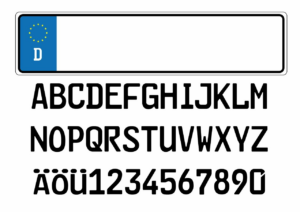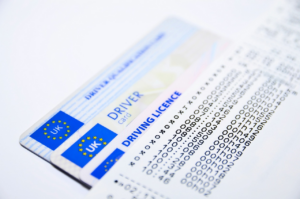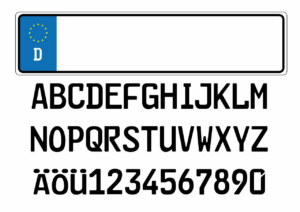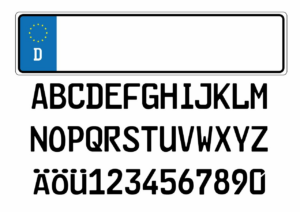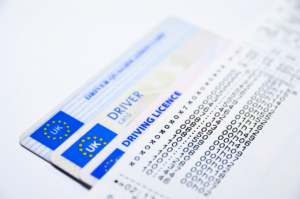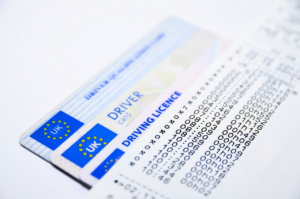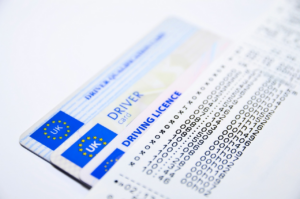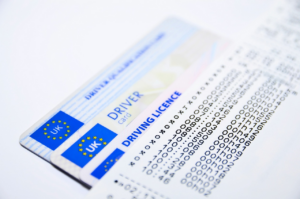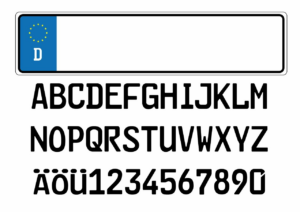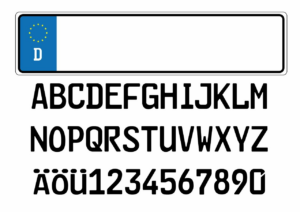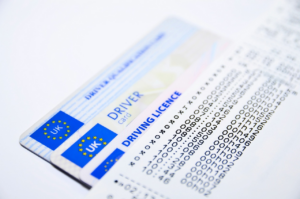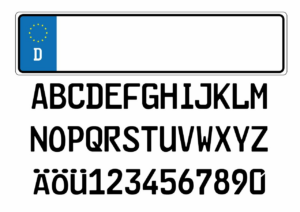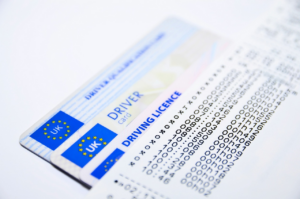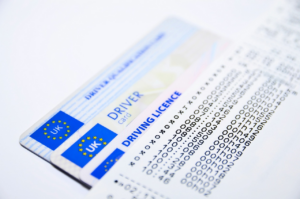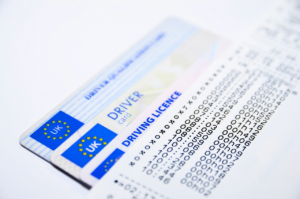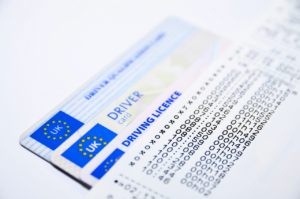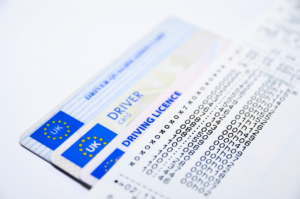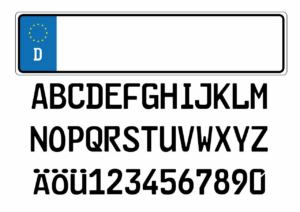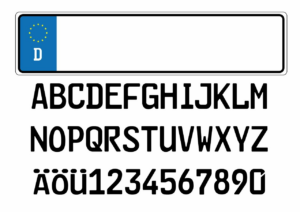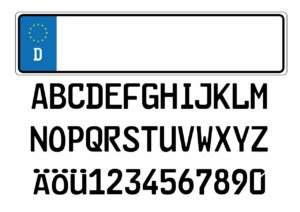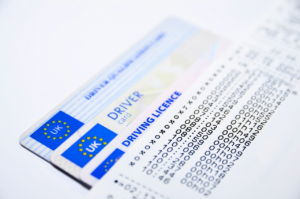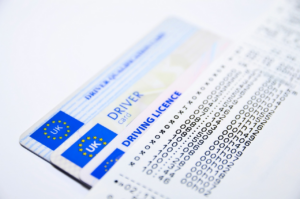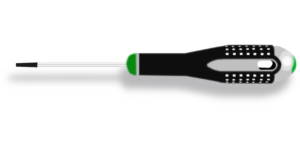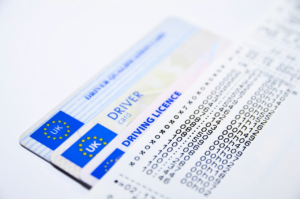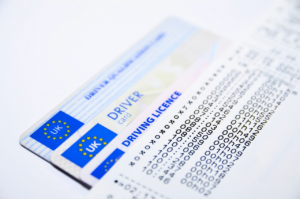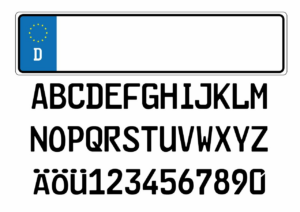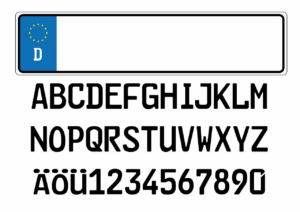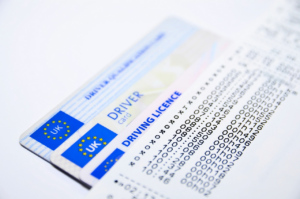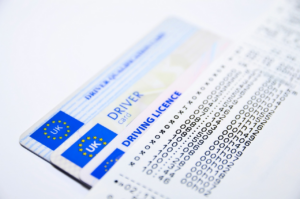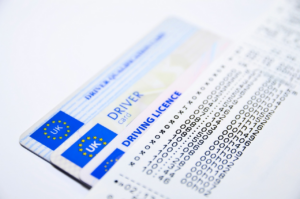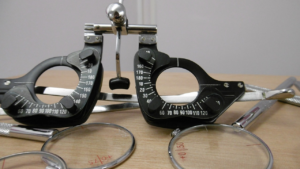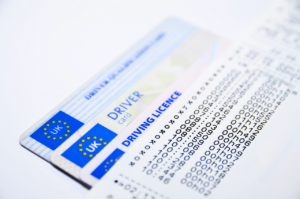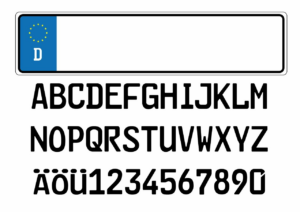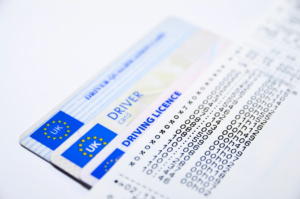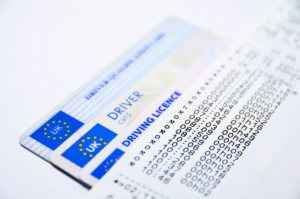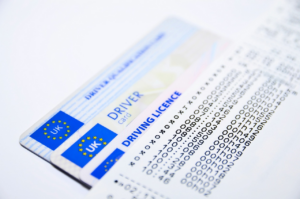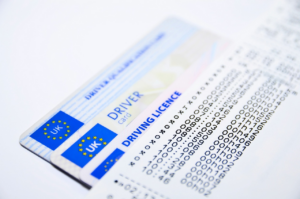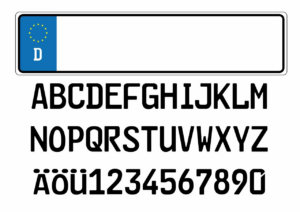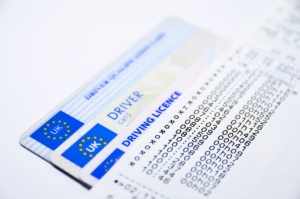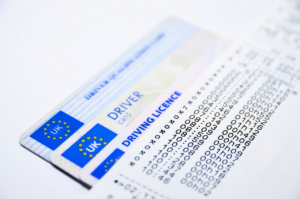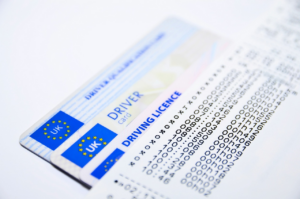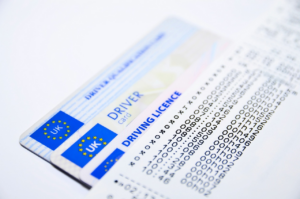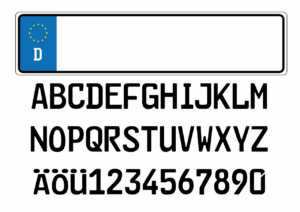Are you ready to take control of the road in Idaho? Obtaining a driver’s license is a crucial step in achieving that sense of independence and freedom. But navigating the process can be overwhelming, especially if you’re new to the state.
That’s why we’ve put together this complete guide to getting your Idaho driver’s license. In this guide, we’ll walk you through the steps to determine what type of license you need, gather the necessary documentation, prepare for the written and driving tests, and pay the required fees. We’ll also cover how to transfer an out-of-state license, maintain a clean driving record, and renew your license when the time comes.
With this comprehensive guide, you’ll have the knowledge and confidence to take control of the road in Idaho. So let’s get started!
Determine the Type of License You Need
Figuring out what kind of permit you require can be a bit confusing, but don’t worry, we’re here to help.
The type of license you need will depend on your age, driving experience, and the type of vehicle you plan to operate. If you’re under 18 years old, you’ll need to apply for a graduated driver’s license (GDL) which has different stages and requirements.
If you’re over 18 years old and have never had a driver’s license before, you’ll need to apply for a regular driver’s license. If you plan to operate a commercial vehicle, you’ll need to apply for a commercial driver’s license (CDL).
This type of license requires additional testing and training, and you’ll need to meet certain medical requirements. If you’re moving to Idaho from another state, you may be able to transfer your out-of-state license, but you’ll need to provide proof of identity, residency, and driving experience.
It’s important to determine the type of license you need before you start the application process to ensure that you meet all the requirements and avoid any delays.
Gather the Required Documentation
To gather the required documentation for your Idaho driver’s license, you’ll need to provide proof of identity, proof of residency, and your Social Security number.
You can prove your identity with a birth certificate, passport, or other government-issued identification.
For proof of residency, you’ll need to show a utility bill or lease agreement with your name and address on it.
Finally, you’ll need to provide your Social Security number, which can be shown with your Social Security card or a W-2 form.
Proof of Identity
You need to prove who you are in order to get your hands on that precious piece of paper that’ll let you legally hit the road.
The Idaho DMV requires that you bring proof of your identity when applying for a driver’s license. Acceptable forms of identification include a passport, a birth certificate, a state-issued ID, or a permanent resident card.
It’s important to note that photocopies or notarized copies are not accepted, and the documents must be original or certified copies.
If you don’t have any of the above forms of identification, you can still apply for a driver’s license, but you’ll need to provide additional documentation. This can include a signed social security card, a W-2 form, or a pay stub that shows your full name and social security number.
It’s important to review the DMV’s list of acceptable documents carefully and bring the required items with you to avoid any delays in the application process.
By providing the necessary proof of identity, you can ensure that you’re on your way to obtaining your Idaho driver’s license.
Proof of Residency
Now that you’ve established your identity, it’s time to provide proof of residency to show that you’re a legitimate resident of the state. This is an important step in obtaining your Idaho driver’s license, as it confirms that you’re eligible to drive on Idaho roads.
To prove your residency, you’ll need to provide at least two documents that show your name and current address. Here are some examples of documents that you can use to prove your residency:
- Utility bill (electricity, gas, water, or garbage)
- Lease agreement or mortgage statement
- Bank statement or credit card statement
- Vehicle registration or insurance card
Make sure that the documents you provide are current and show your full name and current address. It’s important to note that P.O. boxes are not accepted as proof of residency.
Once you’ve provided the necessary documents, the DMV will verify your information and move on to the next step of the process.
Social Security Number
Providing your Social Security Number is an essential step in the process of obtaining a valid driver’s license, as it ensures that you are properly identified and legally eligible to operate a vehicle in the United States. The Social Security Number is a unique identifier that is used by the government to track your earnings and work history, and it is also used by various government agencies to verify your identity. When you apply for a driver’s license in Idaho, you will need to provide your Social Security Number, along with other documents that prove your identity and residency.
To help you better understand the importance of providing your Social Security Number when applying for a driver’s license in Idaho, here is a table that outlines the documents you will need to provide along with your Social Security Number:
| Required Documents | Examples |
|---|---|
| Proof of Identity | Birth certificate, passport, or permanent resident card |
| Proof of Residency | Utility bill, lease agreement, or bank statement |
| Social Security Number | Social Security card or W-2 form |
By providing these documents, you will be able to prove your identity, residency, and eligibility to drive in Idaho. It is important to note that if you are not eligible for a Social Security Number, you will need to provide documentation from the Social Security Administration stating that you are not eligible. Overall, providing your Social Security Number is a crucial step in obtaining your Idaho driver’s license, so be sure to have all the necessary documents ready before you apply.
Schedule and Prepare for the Written Test
To prepare for the written test for your Idaho driver’s license, you should study the Idaho Driver’s Manual thoroughly. This will give you a comprehensive understanding of traffic rules and regulations.
Additionally, taking practice tests will help you assess your knowledge and identify areas where you need improvement.
Finally, knowing what to expect on test day, such as the format of the test and what items to bring, will help you feel more confident and prepared.
Study the Idaho Driver’s Manual
Mastering the rules of the road is crucial to passing your driver’s exam and hitting the pavement with confidence. One way to do this is by studying the Idaho Driver’s Manual.
The manual contains all the information you need to know to become a safe and responsible driver. It covers topics such as traffic laws, road signs, and safe driving practices.
Make sure to read the manual thoroughly and take notes on important information. You can also take practice tests online or from the manual to test your knowledge and reinforce what you’ve learned.
Remember, the more you study and practice, the more confident you will be on the day of your exam. So, take the time to study and master the manual, and you’ll be well on your way to getting your Idaho driver’s license.
Take Practice Tests
You can ace your driver’s exam and feel confident on the road by testing your knowledge with practice exams. Not only will it help you get familiar with the format of the test, but it’ll also give you an idea of what areas you need to focus on.
Here are three tips to help you make the most out of your practice tests:
-
Take the test in a quiet environment with no distractions. This’ll help you focus on the questions and prevent you from getting frustrated or anxious.
-
Time yourself while taking the test. This’ll prepare you for the actual exam and help you manage your time effectively.
-
Review your answers after each practice test. This’ll allow you to identify your strengths and weaknesses and help you improve your score on the actual exam.
Know What to Expect on Test Day
Get ready for test day and feel confident with these helpful tips! Knowing what to expect on the day of your driving test can help you feel at ease and perform your best. Here are some things to keep in mind:
First, arrive early at the DMV office. This will give you time to relax and mentally prepare yourself. Also, make sure you have all the necessary documents, such as your learner’s permit and proof of insurance. Once you’re inside the DMV office, you’ll be given instructions on what to do next. You’ll be asked to provide your documents, pay the fee, and take a vision test. Then, you’ll wait for your name to be called for the driving test.
To give you a better idea of what to expect during the driving test, here’s a table that outlines the various maneuvers you’ll be asked to perform. The table also lists the common mistakes that often result in points deducted from your score. Study this table and practice these maneuvers beforehand to increase your chances of passing the test on your first try.
| Maneuver | Common Mistakes | Points Deducted |
|---|---|---|
| Parallel Parking | Hitting the curb, not checking surroundings | 5 |
| Three-Point Turn | Not checking surroundings, going over the curb | 3 |
| Lane Change | Not checking mirrors, not signaling | 2 |
By following these tips and practicing the necessary maneuvers, you’ll be well-prepared for your driving test. Remember to stay calm and focused, and you’ll be on your way to earning your Idaho driver’s license in no time!
Schedule and Prepare for the Driving Test
When preparing for the driving test in Idaho, it’s important to understand the requirements set by the DMV. This includes age, residency, and any necessary documentation.
Once you’ve met these requirements, it’s crucial to practice your driving skills in various situations and scenarios.
Finally, on test day, it’s important to know what to expect. This includes the types of maneuvers you may be asked to perform and the grading system used by the examiner.
By following these steps, you can increase your chances of passing the driving test and obtaining your Idaho driver’s license.
Understand the Requirements
To make sure you meet all the necessary qualifications, it’s important to understand the requirements before starting the process of getting an Idaho driving license.
Firstly, you must be at least 15 years old to apply for a driver training permit. Once you have held the permit for six months and completed 50 hours of supervised driving, you can then apply for a license if you are at least 16 years old.
Additionally, you’ll need to provide proof of your identity, such as a birth certificate or passport, and proof of your residency in Idaho. You’ll also need to pass a vision test and a knowledge test, which covers the rules of the road, traffic signs and signals, and safe driving practices.
Finally, you’ll need to pass a driving skills test to demonstrate your ability to operate a vehicle safely and confidently.
By understanding these requirements, you can ensure that you’re fully prepared to obtain your Idaho driving license and enjoy the freedom and independence that comes with it.
Practice Driving Skills
Now it’s time for you to hone your driving skills and become a confident driver on the road. Practice is key to mastering any skill, and driving is no exception. The more time you spend behind the wheel, the more comfortable and confident you will become.
To practice your driving skills, consider the following tips:
-
Find a quiet, low-traffic area to practice in, such as an empty parking lot or a quiet residential street.
-
Start with basic maneuvers, such as turning, stopping, and accelerating.
-
Gradually progress to more complex maneuvers, such as merging onto highways and navigating through busy intersections.
Remember to always prioritize safety and follow the rules of the road. With practice and patience, you’ll soon be ready to take the Idaho driving test and earn your license.
Know What to Expect on Test Day
Get ready for what’s in store on test day by checking out this section! Knowing what to expect can help you feel more prepared and confident when it’s time to take your Idaho driving test.
First, it’s important to arrive at the testing center with all necessary documents, including your learner’s permit, proof of insurance, and any required fees. You’ll also need to bring a vehicle that meets the Idaho Department of Transportation’s safety standards.
During the test, you’ll be evaluated on your ability to follow traffic laws and safely operate a vehicle. This includes tasks like parallel parking, making turns, and merging into traffic. The examiner will also assess your awareness of your surroundings and your ability to react appropriately to different situations.
Remember to stay calm, follow instructions carefully, and focus on driving safely and confidently. With some practice and preparation, you can pass your Idaho driving test and earn your license.
Pay the Necessary Fees
Paying the fees is a crucial step in obtaining your ultimate goal of legally operating a vehicle in the Gem State. The Idaho Department of Transportation (ITD) charges different fees depending on the type of license you’re applying for.
For instance, if you’re applying for a Class D license, which is the standard license for non-commercial drivers, you’ll be required to pay $30.50. However, if you’re applying for a motorcycle endorsement, you’ll need to pay an additional $15.50.
It’s important to note that the fees are non-refundable, so it’s essential to ensure that you meet all the requirements before making the payment. Additionally, it’s recommended that you pay the fees online, as this is the most convenient and quickest way to process the payment.
Once the payment is received, you’ll be issued with a receipt, which you’ll need to present during your test day. So, make sure to pay the necessary fees on time to avoid any delays in obtaining your Idaho driving license.
Transferring an Out-of-State License
If you’ve moved to Idaho from another state, you’ll need to transfer your out-of-state license to continue legally driving in the Gem State. This process entails visiting the Idaho Transportation Department (ITD) and providing the necessary documents to prove your identity and driving experience.
Here are the steps to transfer your out-of-state license:
- Visit the ITD and fill out an application for an Idaho driver’s license.
- Provide proof of identity, such as a birth certificate, passport, or permanent resident card.
- Show proof of your Social Security number, such as a Social Security card or W-2 form.
- Provide proof of residency, such as a utility bill or lease agreement.
- Surrender your out-of-state license and pay the necessary fees.
Once you’ve completed these steps, you’ll be issued an Idaho driver’s license. It’s important to note that if your out-of-state license has been expired for more than 25 months, you’ll be required to take a written and driving test.
Overall, transferring your out-of-state license is a straightforward process as long as you have the necessary documents and follow the ITD’s guidelines.
Maintaining a Clean Driving Record
If you want to maintain a clean driving record in Idaho, there are several key points that you need to keep in mind.
Firstly, you need to understand the traffic violations and points system, which assigns points to your license for various driving offenses.
Secondly, you should be aware of the circumstances that can lead to license suspensions and revocations.
Finally, you must ensure that you meet the state’s insurance requirements to avoid penalties and fines.
By staying informed and vigilant, you can keep your driving record clean and avoid any negative consequences.
Traffic Violations and Points
You’ve made a serious mistake and now you’re facing the consequences – understanding the impact of traffic violations and points on your driving record is crucial.
Traffic violations can range from minor infractions, such as failing to use a turn signal, to major offenses like reckless driving or DUI. Each violation carries a certain number of points that are added to your driving record. Accumulating too many points can result in the suspension or revocation of your license.
It’s important to note that not all violations carry the same number of points. For example, a speeding ticket may add one to three points, while a DUI conviction can add six to ten points.
Additionally, different states have varying laws regarding how long points stay on your record. In Idaho, points stay on your record for three years. It’s important to keep track of your points and take steps to prevent them from accumulating, such as attending traffic school or hiring a lawyer to fight a ticket.
By being aware of the impact of traffic violations and points, you can take control of your driving record and maintain a clean slate.
Suspensions and Revocations
Facing a suspension or revocation of your driver’s license can be a serious consequence of accumulating too many points on your driving record. A suspension is a temporary loss of driving privileges, while a revocation is the permanent loss of your license.
If you receive a suspension, the length of time you are unable to drive will depend on the severity of the violation. For example, if you’re caught driving under the influence, your license may be suspended for up to a year.
Revocations, on the other hand, are reserved for the most serious violations, such as vehicular manslaughter or repeated DUI offenses. If your license is revoked, you’ll need to go through a lengthy process to have it reinstated, including passing a written test, a driving test, and possibly attending a traffic safety course.
It’s important to note that driving with a suspended or revoked license is illegal and can result in further penalties, including fines and even jail time. So, it’s crucial to take traffic violations seriously and do your best to avoid accumulating too many points on your driving record.
Insurance Requirements
Ensuring you have proper insurance coverage isn’t just a legal requirement, but it also protects you financially in case of an accident. Idaho law mandates that you carry liability insurance that covers at least $25,000 per person and $50,000 per accident for bodily injury, as well as $15,000 for property damage. This basic coverage is known as 25/50/15 coverage.
Failing to have insurance that meets these minimum requirements can result in serious consequences, including fines, license suspension, and even being held personally liable for any damages or injuries you cause in an accident.
In addition to liability coverage, there are other types of insurance you may want to consider. Collision coverage pays for damages to your vehicle in the event of an accident, regardless of who is at fault. Comprehensive coverage covers damages to your vehicle that are not caused by a collision, such as theft or damage from weather events. Uninsured/underinsured motorist coverage protects you if you are hit by someone who doesn’t have insurance or doesn’t have enough insurance to cover the damages.
While these additional types of insurance aren’t required by law, they can provide valuable protection and peace of mind.
Renewing Your Idaho Driver’s License
If you’re due for a renewal, it’s essential to be aware of the necessary steps to keep your driver’s license valid in Idaho. The process is relatively straightforward and can be done either online, by mail, or in person at a DMV location. However, keep in mind that the state allows you to renew your license only up to 25 months before it expires. If you want to renew it earlier, you might need to provide proof of your residency or identity.
To renew your Idaho driver’s license, you’ll need to complete the required documents and pay the renewal fee. The documents may include a completed application form, proof of your residency, and a vision exam. If you’re renewing in person, you’ll need to bring your expiring license with you.
Once you’ve completed the process, you’ll receive a temporary paper license, which is valid for 45 days. Your new license will be mailed to your address within two weeks.
By following these steps, you can ensure that your driver’s license is renewed on time, allowing you to continue driving with peace of mind.
Frequently Asked Questions
Can I renew my Idaho driver’s license if I have an out-of-state license?
Yes, you can renew your Idaho driver’s license even if you have an out-of-state license. To do so, you’ll need to provide proof of your identity and residency in Idaho, such as a birth certificate, passport, or utility bill.
You may also need to pass a vision test and pay a renewal fee. Keep in mind that if your out-of-state license has been expired for more than 25 months, you may need to retake the written and driving exams.
Renewing your license is an important step in maintaining your driving privileges and ensuring that you’re legally able to operate a vehicle in Idaho.
Is there a way to expedite the processing of my driver’s license application?
Looking to speed up the processing of your driver’s license application? There are a few options available to you.
First, consider scheduling an appointment at your local DMV office. This can help ensure that you don’t have to wait in long lines and can get in and out quickly.
Additionally, you may be able to expedite your application by paying an additional fee. This will vary depending on your state and the specific circumstances of your application. Be sure to check with your local DMV office to see what options are available to you.
By being proactive and taking advantage of these resources, you can help ensure a smoother and faster processing experience.
Do I need to take a driving test in order to transfer my out-of-state license to Idaho?
If you’re transferring your out-of-state driver’s license to Idaho, you may not need to take a driving test. However, it ultimately depends on your driving record and the state you’re coming from.
Idaho has reciprocity agreements with certain states, meaning that if you have a valid license from one of those states, you won’t need to take a driving test. You will still need to provide proof of identity, residency, and legal presence in the United States.
It’s important to check with the Idaho Transportation Department to see if your state is included in the reciprocity agreement and what documents you’ll need to provide.
What happens if I fail my written or driving test?
If you fail your written or driving test when transferring your out-of-state license to Idaho, don’t worry, you can retake it.
In fact, you can retake the test as many times as you need to pass.
If you fail the written test, you’ll have to wait at least one day before retaking it.
If you fail the driving test, you’ll have to wait at least one week before retaking it.
It’s important to study and practice before taking the tests to increase your chances of passing.
If you do fail, take it as a learning opportunity and strive to do better on your next attempt.
Can I pay my driver’s license fees online?
You’ll be pleased to know that paying your driver’s license fees online is an option in Idaho. This convenient method allows you to avoid the hassle of mailing in a check or visiting a DMV office in person.
To pay online, you’ll need to visit the Idaho DMV website and provide your driver’s license number, date of birth, and payment information. Once your payment is processed, you can expect to receive your renewed license in the mail within a few weeks.
It’s important to note that some types of license renewals may require additional documentation or testing, so be sure to check the Idaho DMV website for specific instructions.
Conclusion
Congratulations! You’ve completed the necessary steps to obtain your Idaho driver’s license. By following the guidelines provided in this article, you’ve successfully determined the type of license you need, gathered the required documentation, scheduled and prepared for both the written and driving tests, paid the necessary fees, and transferred an out-of-state license if applicable.
However, obtaining your license is just the beginning. It’s important to maintain a clean driving record by following traffic laws and regulations, avoiding accidents, and attending driving courses if necessary.
Additionally, it’s important to renew your license before it expires to avoid any potential legal consequences. Remember, driving is a privilege, and it’s your responsibility to ensure the safety of yourself and others on the road.
Safe driving and good luck on your future adventures!





